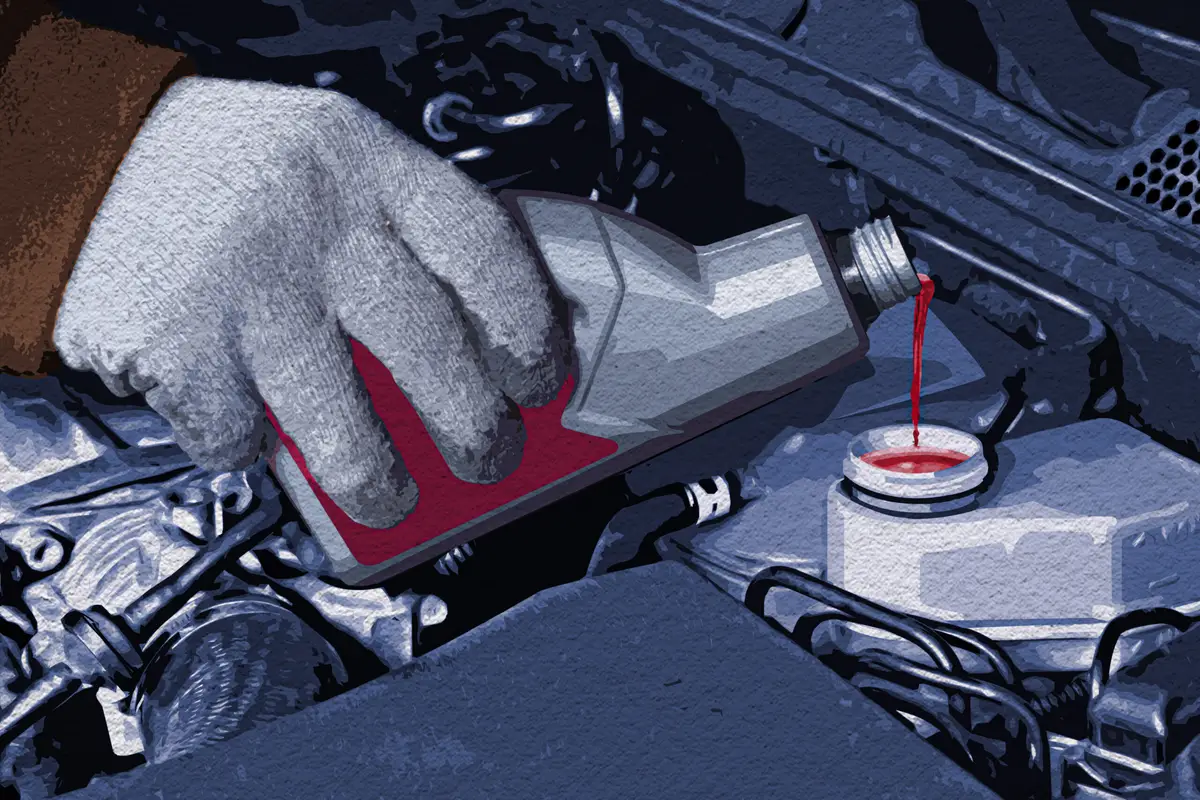How Often Do I Need to Change My Brake Fluid?

The brake system is one of the most critical components of your vehicle, and brake fluid is probably something that is overlooked or not thought of enough. How often you need to change your car’s brake fluid is covered in the maintenance section of your owner’s manual, and it can vary greatly.
Related: Why Is the ABS Light On?
For instance, the maintenance schedule for the 2012 Nissan Leaf recommends replacing the brake fluid every year or 15,000 miles under “Severe Service,” and every two years or 30,000 miles otherwise. By contrast, the 2012 Toyota Camry’s maintenance schedule doesn’t call for it through 12 years or 120,000 miles — which is as far as the schedule extends — though it does call for it to be inspected periodically. Most cars fall somewhere within those two extremes.
If you don’t have your vehicle’s owner’s manual, you can try searching online for “(year/make/model) owner’s manual” or “(year/make/model) maintenance schedule.” It’s best to reference either the manufacturer’s site or one that displays your owner’s manual rather than one that just tells you what your vehicle supposedly needs.
Why Does the Brake Fluid Need to Be Changed?
Liquids are noncompressible, which is what you need in your brake system to transfer the movement of the brake pedal through small-diameter lines (tubes) to the brakes at each wheel. By contrast, gasses — such as air — are compressible, and if any gets into your brake fluid lines, it can result in a “mushy” pedal feel and therefore lead to the failure to transfer some of the pedal force to the brakes. This would be bad, particularly in downhill braking or a panic stop.
So, how would a gas get into your brake fluid line? Water — or more precisely, water that has boiled to become a gas.
While modern brake fluid doesn’t boil until around 440 degrees Fahrenheit, water boils at 212 degrees. So if much water gets into your brake lines, it effectively lowers the boiling point of the brake fluid. Under severe braking, a lot of heat is generated, which could vaporize some of the brake fluid, causing the brakes to fail. Water in the brake fluid can also make the brake lines rust out prematurely, resulting in a leak.
Now, how would water get into your brake fluid lines? Primarily from the surrounding air.
Brake fluid is hygroscopic, meaning it attracts and holds water. The brake fluid reservoir under your car’s hood is typically only filled halfway with brake fluid, meaning the top half is filled with air. The same applies for any can of opened brake fluid that might be used to “top off” the reservoir. Air always contains some water — more in humid climates — so you want to limit the amount of time either the reservoir or the can of brake fluid used to fill it is open. However, you can also have the fluid exposed to air if there’s any kind of a leak in the brake system’s numerous components.
A mechanic may flush the brake lines and put in new fluid when a brake job is done, and if so, that may be often enough — as long as you don’t do a lot of highway driving, where the brakes don’t get used much and thus aren’t often replaced. That’s why there’s often both a time and mileage interval listed on the car’s maintenance schedule, and you should replace the brake fluid at whichever interval comes first.
In some cases, the maintenance schedule only indicates that the brake fluid should be inspected. That inspection may not just be for fluid level, but may also include a test to see how much water is in the fluid. If there’s very little water in the fluid (just 3% is getting near the danger zone), it probably doesn’t need to be changed — though dirty fluid might warrant a change anyway. (Most brake fluid starts out as light brown or nearly clear.) A shop might have a special tester to check for water, but there are also simple testers you can buy yourself that cost less than $10. However, note that they may not carry any certification of accuracy.
More From Cars.com:
- Why Is My Car Leaking Oil or Another Fluid?
- How Do I Find Out if a Car Is Still Under Warranty?
- Report: Here’s What It Will Cost to Fix Your Check-Engine Light
- What Fluids Should I Top Off?
- More Service Articles
Related Video:
Cars.com’s Editorial department is your source for automotive news and reviews. In line with Cars.com’s long-standing ethics policy, editors and reviewers don’t accept gifts or free trips from automakers. The Editorial department is independent of Cars.com’s advertising, sales and sponsored content departments.
Featured stories



